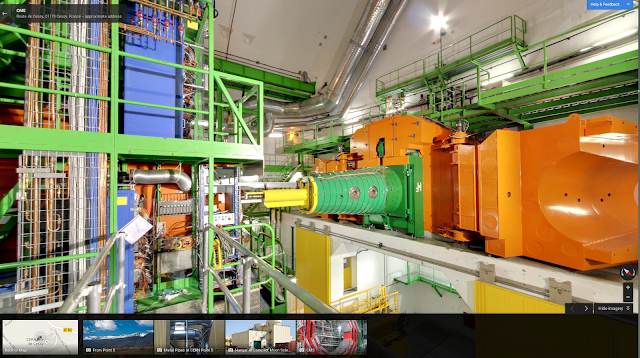September 26th, 2013 | Published in Google Earth
At CERN, the European particle physics laboratory based in the suburbs of Geneva, some of the world’s best physicists and engineers are using advanced particle accelerators to help solve age old questions about the universe — What is is made of? How did it start?
We’re delighted that CERN opened its doors to Google Maps Street View allowing anyone, anywhere in the world to take a peek into its laboratories, control centers and its myriad underground tunnels housing cutting-edge experiments. Street View also lets scientists working on the experiments, who may be on the other side of the world, explore the equipment they're using.
This is the Large Hadron Collider. The LHC beauty experiment will shed light on why we live in a universe that appears to be composed almost entirely of matter, but no antimatter. Learn more here.
This is the the 7000-tonne ATLAS detector. From a cavern 100 metres below a small Swiss village, it’s probing for fundamental particles including the Higgs Boson.
ALICE is a heavy-ion detector on the Large Hadron Collider ring. It's designed to study the physics of strongly interacting matter at extreme energy densities, where a phase of matter called quark-gluon plasma forms.
The Compact Muon Solenoid (CMS) is a general-purpose detector at the Large Hadron Collider. It's designed to investigate a wide range of physics, including the search for the Higgs boson, extra dimensions, and particles that could make up dark matter.
For two full weeks back in 2011, members of our Street View team from Google’s Zurich office worked with our CERN partners to capture this incredible imagery. You can check out the above experiments, like ATLAS, ALICE, CMS, LHCb and the Large Hadron Collider tunnel in Google Maps, as well as collections of other Street View imagery from amazing sites around the world, on our Views site.
You can also learn more about CERN by following its Google+ page.
Posted by Pascale Milite, Google Street View operations



